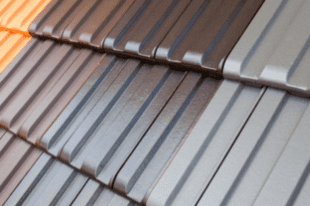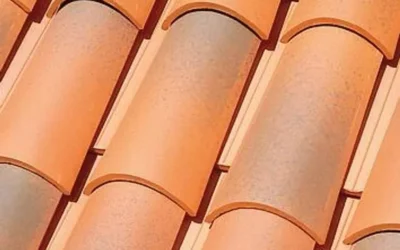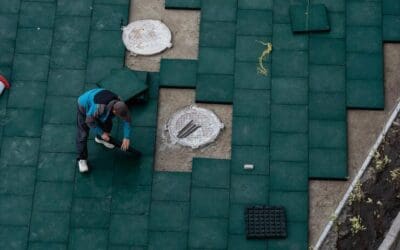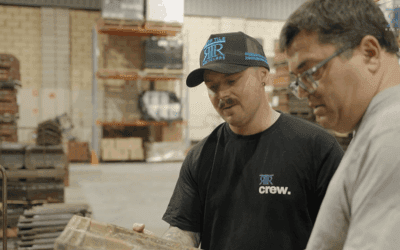You can mix different roof tiles, but it’s rarely recommended. Mismatched tiles often lead to leaks, poor alignment, structural issues, and insurance problems. The best solution is to match your existing tile using recycled or manufacturer-accurate replacements.
Mixing roof tiles might seem practical during a quick repair or renovation, but it usually causes more harm than good. Differences in shape, profile, and watercourse design often result in leaks, structural stress, and rejected insurance claims. Even tiles that appear similar on the surface may not interlock properly beneath.
We’ve worked with homeowners across Parramatta, Glenwood, and Camden who faced costly rework after using “close enough” tile matches. Instead, the most reliable approach is to match your existing tiles using recycled stock, especially if your original tiles are no longer manufactured.
Below, we’ll break down the risks of mixing tiles, council regulations, profile compatibility issues, and how to confidently source a matching replacement.
Technically Possible, But Risky: Why You Should Be Careful
Some homeowners try to mix different roof tiles when replacing a broken section or extending part of the roof. While it might seem like a convenient solution, mixing tile types, sizes, or profiles often leads to long-term issues that aren’t visible right away. These can include water ingress, reduced durability, and changes to your roof’s overall appearance.
If you’re replacing tiles on an older home in areas like Parramatta, Glenwood, or Camden, it’s crucial to understand the consequences of mismatched materials. Repairs should always match existing tiles as closely as possible, both in structure and in look. That’s why we help identify and supply recycled roof tiles from our massive stock of over 150,000 in Sydney.
Aesthetic Mismatches Are More Noticeable Than You Think
Even small differences in tile shape, finish, or colour can disrupt the uniformity of your roof. While a new tile might look similar at first glance, once installed, it can create a patchy effect, especially in sunlight or from the street view. This is a common issue when mixing terracotta with concrete, or when using tiles from different manufacturers or batches.
Homes in heritage suburbs like Campbelltown, Castle Hill, or Wahroonga often have tiles with aged patinas that can’t be replicated with new stock. That’s why many homeowners in these areas choose recycled roof tiles from our collection, not only for practicality but also to preserve the home’s original character.
If your roof uses terracotta, we highly recommend reading our article on Terracotta Roof Tiles: Is It a Better Choice for Your Home? for more insights on matching historic profiles.
Profile & Fit Incompatibility Can Lead to Leaks
Roof tiles are more than surface decoration; their interlocking profiles are designed to create a watertight barrier. Every tile has a unique shape underneath, including the nib, underlap, and watercourse. When two tiles don’t align correctly, even by a few millimetres, they can disrupt water flow and compromise your roof’s integrity.
We often see this when homeowners attempt to mix a concrete tile from one brand with a similar-looking one from another. Even if the face looks right, the underside rarely lines up the same way. This is a common cause of small but persistent leaks that are difficult to trace.
Before you attempt any replacement, visit our Looking for a Roof Tile? page and submit clear photos of your current tiles. That way, we can help you find a compatible match based on structure, not just colour.
Even Tiles from the Same Manufacturer Might Not Match
Some homeowners assume that if two tiles are both made by a company like Monier, they must be compatible. However, tile molds often change across decades. A Monier tile from the early 1990s could have different measurements than a newer one, even if the profile name is the same.
These subtle differences become a major issue during installation. Tiles that appear to “fit well enough” can gradually shift under load, wind, or foot traffic, especially on older roofs with settled frames. This can cause misalignment, cracked joints, or increased water penetration.
Our team works with recycled tiles from all major manufacturers, Monier, Bristile, Lutum, and many discontinued brands. When in doubt, we’ll help you avoid the gamble and match your roof with tiles from the same production era. You can read more about this process in How to Choose Recycled Roof Tiles.
Why Roofing Insurance & Councils May Reject Mixed Tiles
In certain council areas, roof repairs are required to follow strict materials guidelines, especially in conservation zones or bushfire-prone suburbs like Hornsby, Spring Farm, or Jordan Springs. If your repair uses tiles that aren’t compliant with local codes or roofing standards, it could be rejected during inspection.
Some insurance companies may also decline a claim if the roof has been patched using mismatched or incompatible materials. This is especially true when tiles have been substituted across different materials, such as clay and concrete, or mixed with metal roofing in dual-layer setups.
We’ve heard many stories where mismatched tiles led to denied coverage due to perceived “non-standard” repairs. If you’re restoring or repairing your roof and are unsure what’s allowed, speak to us first. We can help identify suitable options that won’t create future headaches.
When Mixing Tiles Might Be Acceptable (With Caution)
There are rare situations where mixing roof tiles can be done, usually on independent structures such as garages, garden extensions, or side awnings. These work best when each tile section drains separately and doesn’t rely on overlap or shared runoff.
In these cases, experienced roofers may use flashing or sarking as a barrier to isolate the different tile types. For example, some extensions use concrete tiles on the main roof and switch to terracotta on a low-slope pergola. Even then, we always recommend confirming compatibility in weight, size, and structural support before proceeding.
Our recycled inventory makes it easier to stick with the original material, which is always the safest and most consistent solution.
Better Solution: Use Recycled Tiles That Match
Rather than risk misalignment, aesthetic issues, or leak damage, sourcing matching recycled roof tiles is the smarter choice. With thousands of discontinued profiles in stock, we often help customers replace broken or missing tiles with exact or near-exact matches.
This is especially valuable for roofs in suburbs like Blacktown, Penrith, or Fairfield, where older homes use tile types that are no longer manufactured. Whether it’s one tile or 100, we’ll help you find what you need without compromising the rest of your roof.
You can learn more about this process and how recycled tiles help reduce landfill waste by visiting Where to Find Quality Recycled Roof Tiles in Sydney.
How to Check Compatibility Before You Buy or Install
Here’s how we recommend identifying your tile before making any changes:
- Bring a sample tile (even broken is helpful)
- Photograph the front and back in clear daylight
- Measure the tile length (top to bottom) and width (excluding the watercourse)
- Visit us or use our enquiry form to upload the information
Understanding your tile type and profile ensures a secure, long-term fit. It also lets us guide you toward options already in our inventory, saving you time and reducing the risk of rework..
Match with Confidence
Mixing different roof tiles might seem practical in the moment, but it rarely saves money or time in the long run. Whether it’s a mismatch in size, slope, or underlap, the result is often poor water control and an uneven finish.
We’ve worked with thousands of homeowners across Sydney who wanted a safe, cost-effective way to repair or upgrade their roofs. Matching your existing tile is always the best outcome, and we can help you do that with confidence.
If you’re working on a roof repair, extension, or restoration, contact us or upload your tile details online. Our team will help you find a tile that fits your home, your budget, and your roof perfectly.




